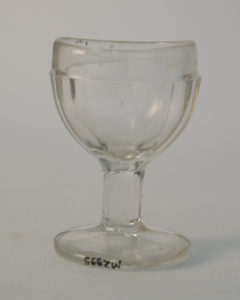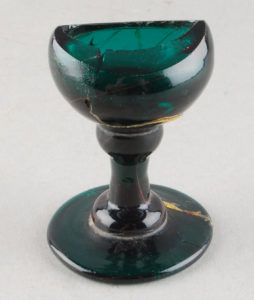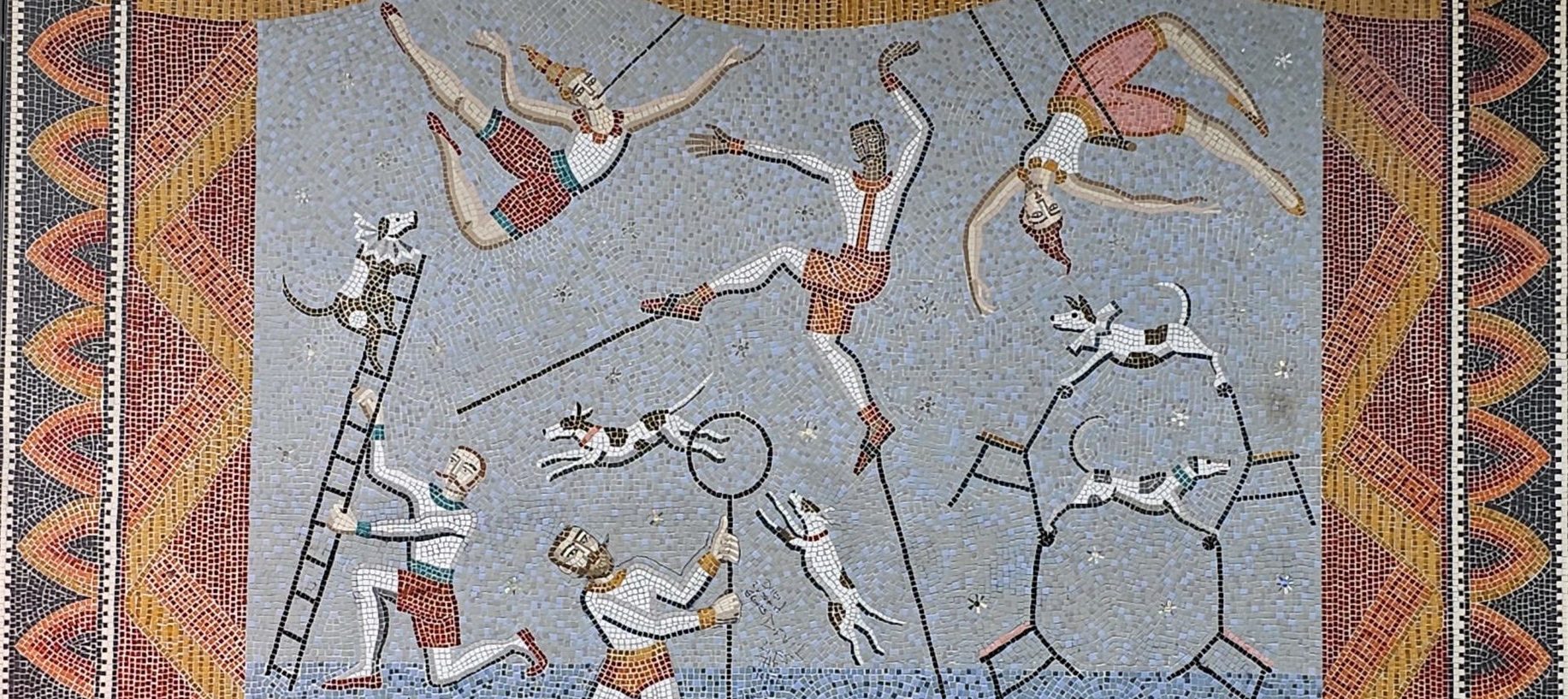
We have five senses, but losing one’s sight feels the most traumatic. Even the smallest sight problems make us deeply nervous and sad. We speak about something that looks interesting and we cannot forget about it we also use the expression “eye-catching”. This turn of phrase shows very well how important this sense is in our lives. We do not appreciate how valuable it is until we lose it. Even a small lash, a tiny particle of pollen or dust becomes incredibly annoying and irritating. Sometimes we need expert medical help, but often, we can help ourselves. How? The easy, old fashioned, home remedy way – an eye bath.

Eyes baths were known and effectively used even a few centuries ago. The most well-known are silver eye baths dated from the XVI century, in the XVIII century these objects were made from ceramic or glass and in the beginning of XX century aluminium eye baths were used. There were two main objectives achieved thanks to an eye bath: the cleansing of the eye and delivery of medication if needed. We know also abut eye bathtubs, which were beautiful but were more uncomfortable for users. It is obvious that to clean their eyes using a bathtub users need to immerse their whole face in the water, not just their eyes. For some people, this is really difficult and can activate their fear of drowning. That is probably why small eye baths made of glass were more popular in the past.

Most popular in museum collections are eye baths made of silver, ceramic (especially porcelain/china), and glass (uranium glass as well!). Sometimes we can find them made from crystal and other materials. These small dishes are so similar to liqueur, vodka or egg glasses that they are neither particularly impressive nor eye-catching. It is easy to miss such an inconspicuous, tiny object in a museum display.

Some of them are obviously rare, are beautifully decorated or are unusual shapes, but to appreciate them fully, one must keenly focus on them, paying attention to detail. Usually, these objects are just a few centimetres in size and look like a tiny goblet. The bowl’s edge is a boat-like shape for a better fit for the human eye. Short legs and stable feet give a guarantee of safe use. Some eye bath glasses made between the 18th and the late 19th century came with accompanying wooden and fabric cases, which help protect these small, beautiful objects from damage when in transit. Before eye drops were invented, one way to clean the eye was to pour some water or liquid treatment into the glass, delicately press the eye bath to the eye, lift the head up, and open the eye blinking a few times, so that the water or medication is able to touch the surface. This is an eye bath.
Eye baths made of glass were popular around the world. You can find many of them on museum’s webpages, even those which are not specifically interested in the history of medicine. Here is just one example of a really interesting back story of one of them – a dark green glass found in Egypt and exposed now on The British Museum webpage. Short curator’s comment says: ‘This is almost certainly British on account of the unusual broad, polished bowl lips. Silver eye baths of this shape were made in Edinburgh around 1800. Five Scottish glass houses listed “eye glasses” in their price lists.’ (Pers. comm. George Sturrock, Nov 2018). Possibly taken from UK to Egypt by Winifred Blackman and used by her to treat eye infections of local Egyptian villagers.

Eye baths are still used, maybe not so often as before, but their usefulness endures. Now we have much more comfortable dispensers, easy-to-use small plastic bottles full of advanced drops solving many different eye problems. However, it still remains the case that an eye bath is straightforward and effective. Today’s eye baths are made of glass or plastic and silicone. Ayurvedic medicine recommends an eye bath using melted Ghee butter as a non-invasive treatment for the regeneration of your eyes. On the packaging for every chemical product, you will find warnings and a reminder to use an eye bath to rinse the harmful product from the eye. This can be done using a bathtub or the eye bath glass… or even ordinary egg -cup glass.


Sources:
https://americanhistory.si.edu/collections/search/object/nmah_994422
https://www.britishmuseum.org/collection/object/E_Af1954-23-4069
https://victoriancollections.net.au/items/5859b681d0ce591cf0aaace9
https://www.wikihow.com/Wash-Eyes-With-Water
https://www.pharmacy.com.mt/kb/eye-wash-techniques/
About the author
Absolwentka Uniwersytetu Warszawskiego. Zafascynowana szkłem i ceramiką w każdym aspekcie ich powstawania i wykorzystania, w tym historycznymi technikami i technologiami wytwarzania, zdobienia i łączenia z innymi materiałami. Do 2020 r. sekretarz redakcji czasopisma „Szkło i Ceramika” (ICiMB, SITPMB). Obecnie prowadzi własny portal Szklo-Ceramika.ONLINE i angażuje się w projekty tematyczne.
ORCID: 0000-0001-9574-7470








